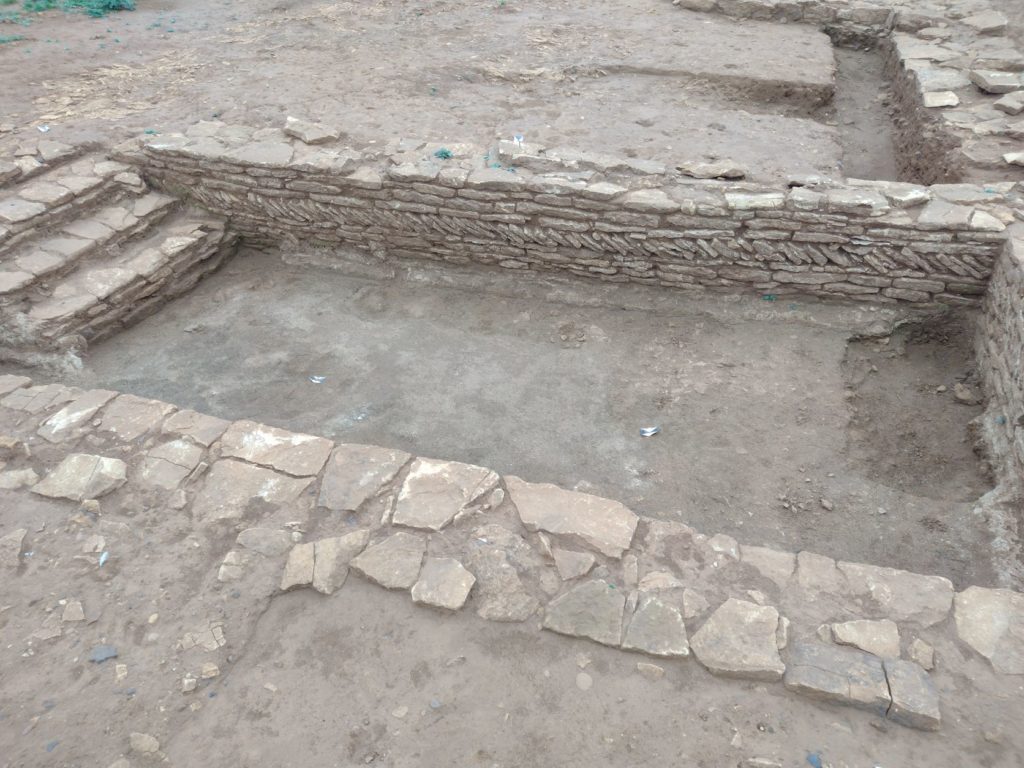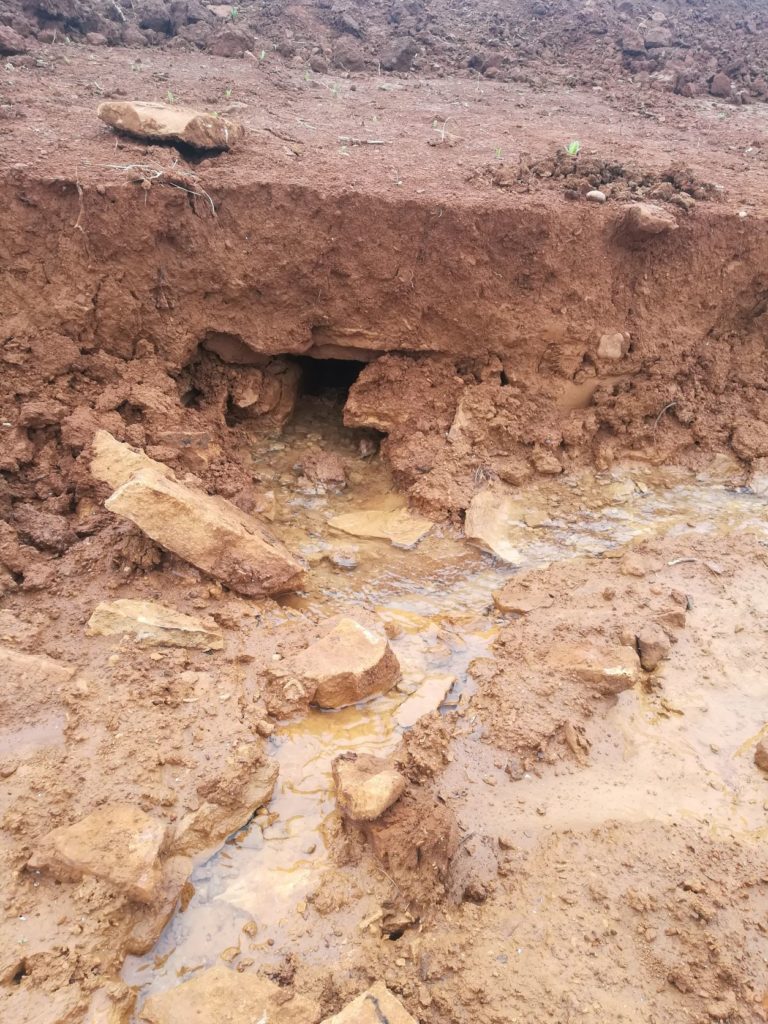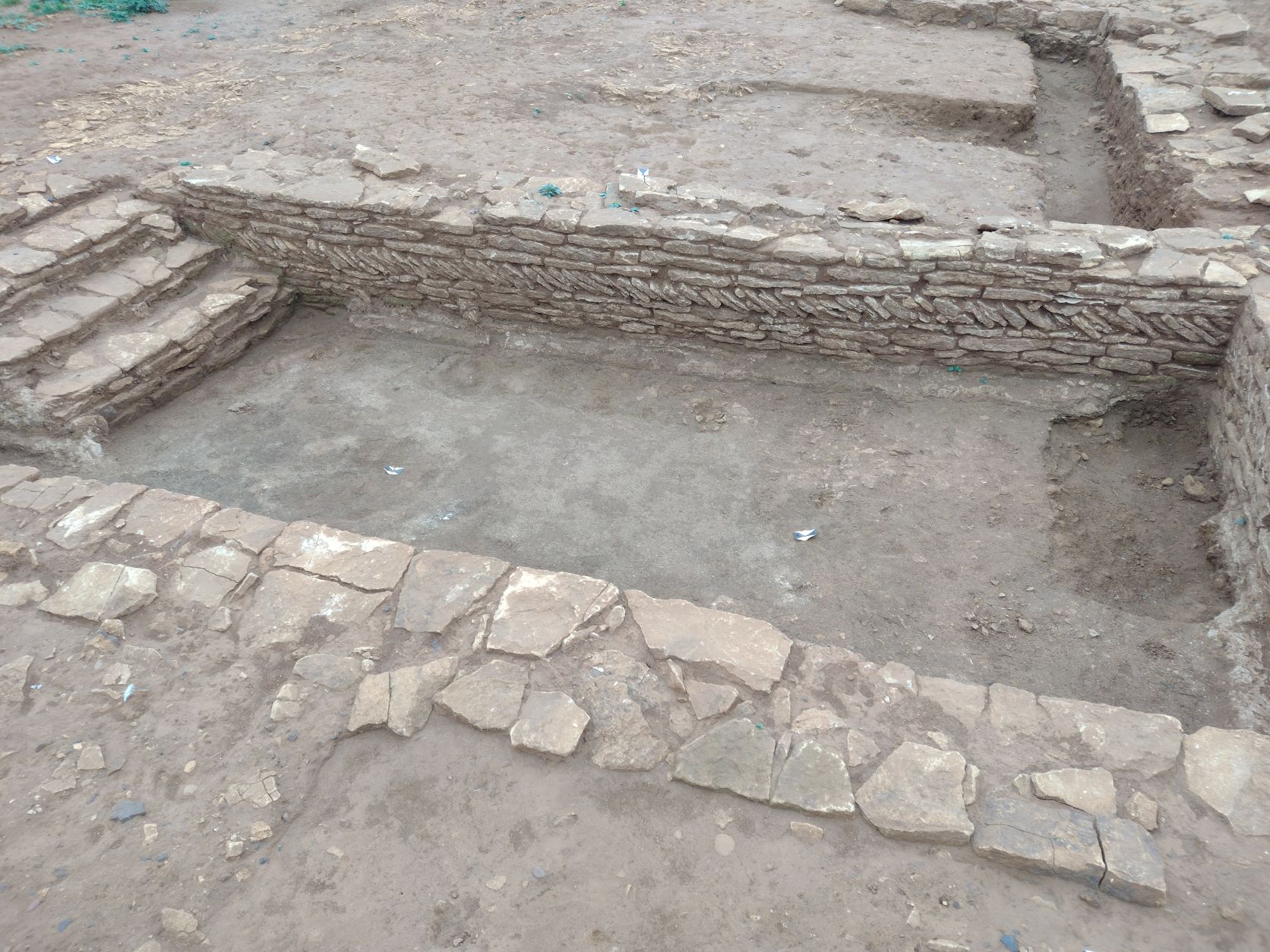The teams at GRM are accustomed to unearthing a wide range of old buildings, dwellings, and archaeological structures. In most cases the presence of such man-made features (or likely presence) is identified during a Phase I Desk Study, with subsequent on-site investigations revealing their exact location and nature.
However, every now and again important structures and features are uncovered by chance. One such example occurred during routine ground investigations for a housing developer in Northamptonshire.
An archaeology investigation is a standard planning condition for large sites, and this was no exception with over 800 plots. A previous ground investigation report had found some evidence of archaeology, but the subsequent GRM investigation uncovered a previously unknown Roman temple along with at least 10 bread ovens and related features for drying the wheat (before being made into bread or beer).
The whole complex appeared to be located close a natural spring running along the interface of two sandstone formations (top of Whitby Mudstone and interface with Northampton Sand Formation). The temple entrance was facing the spring.
The paleochannel was cut by the meltwater has been subsequently infilled with Superficial deposits including Alluvium. It has had various historic phases of use represented by pots, animal bones, and the odd burial. A square box drain made from tabular sandstone is the 18th century drain that was laid in the channel to drain the springs.


The archaeologists working on site said that although the features were impressive, they are not exceptional for Northamptonshire and were unlikely to impact the proposed development.
If you have any development or construction projects, then please get in touch to find out how we can help save both time and costs. Please use your main point of contact at GRM or for new enquiries email richard.upton@grm-uk.com or call 01283 551249.


